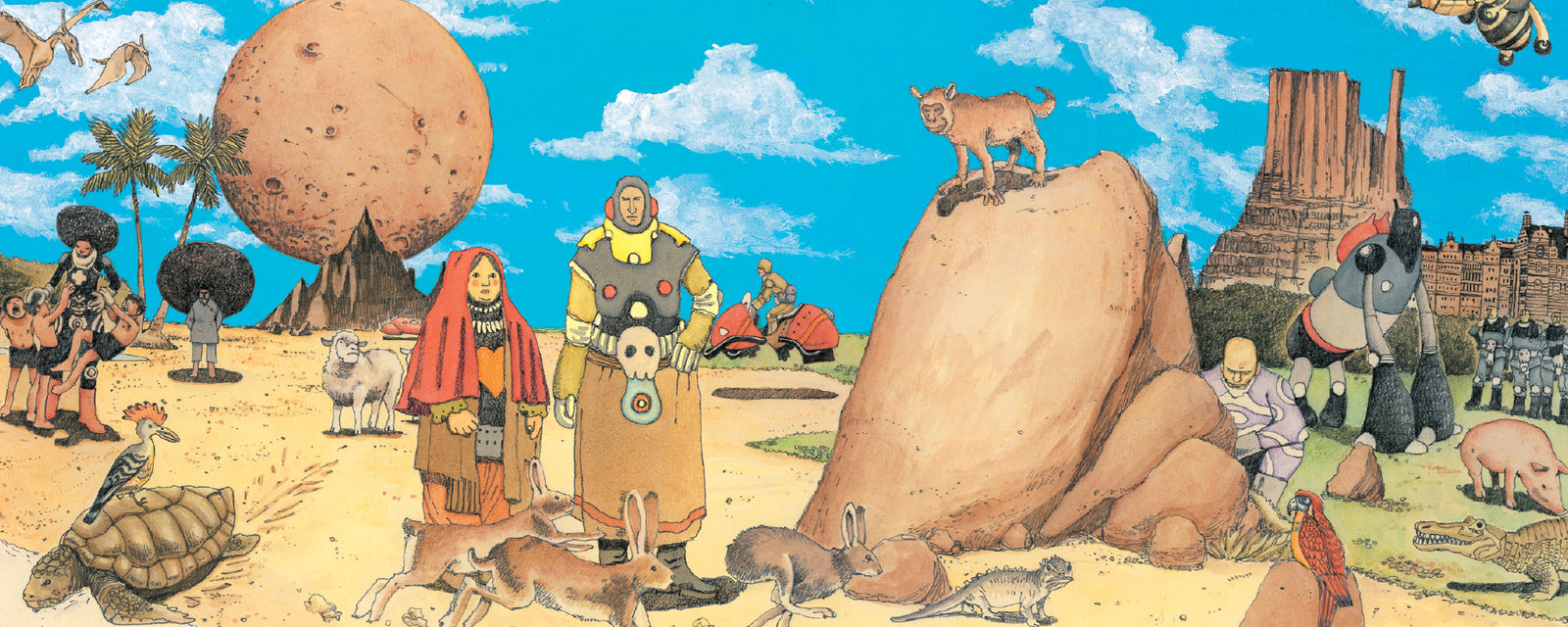Your Cart is Empty
Artists

Taiyo Matsumoto's No. 5: A Psychedelic Tale of Revenge
September 21, 2021 3 min read 0 Comments
Freedom comes at a heavy price in No. 5, by Taiyo Matsumoto (Ping Pong, Tekkon Kinkreet), a sorrowful story of revenge and intrigue. In the distant future, the powers that be created a team of genetically engineered super soldiers known as the Peace Corp Commandos, with the Rainbow Brigade being the cream of the crop. Rainbow Brigade members cast off the names of their old lives in favor of numbers. Our titular anti-hero, No. 5, breaks from the group, taking a woman named Matryshoka with him, and now he must fight off his former comrades in arms. No. 5 is one of the most skilled members of the Brigade and many of the fighters know that going after him means suicide, but they do so anyways out of a sense of duty or revenge, all while it seems like the Rainbow Brigade itself may be unraveling from within as public trust in them sours. The story moves back and forth between No. 5 evading or hunting the Rainbow Brigade, and the other members contemplating the importance or futility of this mission. The psychedelic visuals bely the relative simplicity of a story about duty and betrayal.
If I had to give a pithy elevator pitch description of No. 5, it’d be Cyborg 009 (Shotaro Ishinomori’s manga about an international team of super-powered cyborgs) meets El Topo (Alejandro Jodorowsky’s psychedelic western about a quest for bloodshed and enlightenment). During an extended sequence in No. 5 the art style shifts to a faux Ishinomori style as we watch an in-world commercial for the Rainbow Brigade itself. There’s a simplicity and efficiency to Matsumoto’s faces combined with a kinetic energy. Matsumoto makes use of distorted angles, almost as if the pages were filmed with a fish-eye lens, lending fluidity to the world and characters. At a glance, one might be inclined to compare Matsumoto’s character art to that of Moebius’, and while there’s definitely some of Jean Giraud’s DNA in this book, Matsumoto creates a unique look for his characters.
Matsumoto has many strengths as an artist, but his environments for No. 5 really stand out. The world of No. 5 is composed of sprawling deserts, silent mountaintops, and tropical islands, but also cacophanus cities that look like Beijing, Rome, and Tokyo all collapsing into a blackhole. The Rainbow Brigade is meant to be a task force from around the world, and the world they inhabit does look like it's condensing in on itself. This blending of aesthetics is also reflected in the unique environments for each member of the Rainbow Brigade. The leader, No. 1, lives in a simplistically stylish apartment adorned with posters of John Lennon and blockbuster movies. Meanwhile the enigmatic No. 4, who is actually a pair of twins with strange psychic powers, lives in an extravagantly opulent manor isolated in the wilderness, and the gruff No. 6 is quasi-nomadic, traveling on horseback. At a glance it may seem like Matsumoto is creating strange environments just for the hell of it, but it communicates a lot about the characters.
Even on a narrative level, there’s a blending of motifs. As each member of the Rainbow Brigade takes their turn hunting down No. 5, the story takes on a different flavor. We see the story go from quiet moments of spiritual reflection, to John Woo style shoot-outs, to Vietnam war-like marching, to spaghetti western heroism. There are multitudes within No. 5, though these tend to be all related to combat and adventure for the most part. Even the story of a member of an elite fighting force going rogue feels evocative of Kazuou Koike or the more politically tinged ninja parables of Sanpei Shirato.
No. 5 originally ran in Japan from 2000 to 2005 in Spirits Zōkan Ikki (later Monthly Ikki) alongside action manga with unusual visual flair such as Q Hayashida’s Dorohedoro. For the English speaking world two volumes of No. 5 were published by Viz in English in 2002 and 2003. Unfortunately only those two volumes were ever translated, leading the manga to fall into obscurity in the US and its volumes closely coveted by manga collectors. Now in 2021, Viz is re-releasing the title and hopefully seeing it through to completion. In my years reading manga I have seen many titles go out of print too quickly or never even see completion in the states, so this is a very welcome surprise, and a chance for you to get acquainted with Taiyo Matsumoto’s strange tale of revenge.
Subscribe
Sign up to get the latest on sales, new releases and more …
